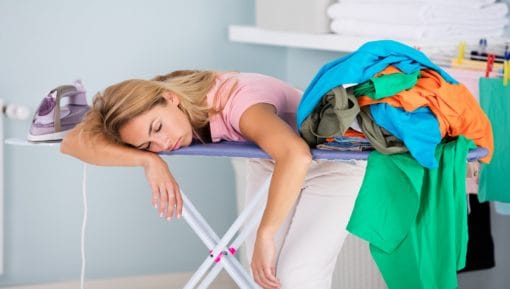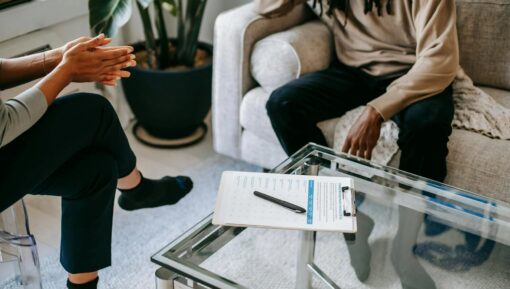Simple Tips To Cure Too Much Sitting Down
I remember all too well how my body reacted to moving from a physical job to a sedentary one.
When I left school at 17, I spent the next three years working in my dad’s warehouse. Most of the work was physical (e.g. moving boxes of stuff, loading and unloading vans), with a tiny bit of office work (e.g. preparing invoices).
But then I completely changed my job and became a computer programmer., and suddenly, I was sitting at a desk for most of my seven hours a day.
And my weight started to increase almost immediately. There may have been other health issues arising from this change of work, but I was unaware of those.
Now, I accept that some of that may be because I was getting older, but the difference between being 18 or so and early 20s is not that great.
On the other hand, when I was working for my father, I would have some huge lunches (e.g. chips / French fries, four sausages, two fried eggs, baked beans, washed down with a pint of lager), whereas when I changed job and ate in the staff canteen, my lunches were typically smaller, and without the alcohol.
So, however I look at it, I have to conclude that sitting down all day is not good for you.
And if you look around, more and more people do have sedentary jobs these days – in countries such as the UK and USA, at least, where a lot of the more physical jobs have been outsourced to overseas.
The good news is that the cure for too much sitting may be easier than you think!
A recent study found that two simple actions can reduce many of the negative effects of a sedentary lifestyle.
Substituting sleep and light physical activity for prolonged sitting is associated with lower stress, happier moods, and healthier body mass index.
This research was conducted by Iowa State University and published in the American Journal of Preventive Medicine.
And this is great news if you’ve been worried about the health consequences of sitting but you’ve been unable to find a practical solution – after all, it’s difficult to quit your desk job and squeeze marathon training into your daily schedule.
As it turns out, small changes can make a big difference, so try this no-sweat approach to sitting less.
Substituting Sleep For Sitting
The average adult sits for about six to eight hours each day, which is a large chunk of time.
Devoting some of that time to sleep could help you lose weight and reduce your risk for many serious conditions including diabetes and certain cancers, as well as anxiety and depression.
Try these tips to get some quality sleep time:
- Limit screen time. Have you fallen into a rut of sitting at work and then watching TV in the evening? Cutting back on browsing and streaming will give you more time for sleep.
- Keep a consistent schedule. Move your bedtime back an hour each night to allow for seven to eight hours of rest – and try to stay on track during weekends and holidays.
- Nap wisely. Daytime sleep can help as long as it doesn’t keep you up at night. Experiment with napping early in the afternoon for up to 30 minutes.
- Change your bedding. Maybe you need a new mattress or pillow. It also helps to keep your bedroom dark, quiet, and cooler rather than warmer when you’re sleeping.
- Learn to relax. Are disturbing thoughts or stiff muscles interrupting your dreams? Find soothing rituals that work for you like meditation or a warm bath.
- Seek morning light. Sunshine wakes up your brain and prepares you to feel drowsy later in the evening. Open your bedroom windows and eat breakfast outside. I used to find going for an early-morning walk (at about 6:00am, for 20 – 30 minutes) worked great. And, if necessary, try using a daylight lamp.
You might also find some of the tips in this article helpful.
Substituting Light Activity For Sitting
Even gentle activities can be effective, but on the other hand, moderate and vigorous work-outs provide more benefits like building muscles and conditioning your heart.
Talk with your doctor about how much exercise is right for you.
You can increase your light activities with these easy strategies:
- Set a timer. If you tend to lose track of time, you may want a reminder to move around after about an hour of sitting, so use an app or a kitchen timer.
- Walk. Take a walk after lunch and add more steps throughout your day. Climb the stairs rather than riding the elevator. And instead of calling somebody in the same building on the phone, walk to their desk.
- Stand up. Spend more time on your feet. Stand up during phone calls and business meetings. Watch TV from an upright position instead of lounging on the couch.
- Take exercise breaks. Use your breaks to jump rope or do push-ups. Work your core and legs with a few yoga or Pilates moves.
- Stretch. Keep in mind that prolonged sitting shortens and stiffens your hip flexors and hamstrings. Stay limber by stretching your muscles and joints regularly.
- Do chores. Housecleaning, cooking, and yard work count too, so vacuum your stairs, wash your car, and weed your garden, for example.
- Adjust your workspace. Trade in your office chair for a standing desk or sit on a stability ball so your muscles have to work to balance your body weight. When you’re working at home, place your laptop on a shelf that’s about elbow height.
Conclusion
With the coronavirus scare still ongoing as I write this, you may be stuck at home for longer than usual, in which case it may be even more important to move more and sit less.
Overcoming a sedentary lifestyle can be as simple as taking a nap and walking or standing while you work – which means there’s no (good) excuse not to do it!. 🙂
Additional Resources
These are suggestions for those who wish to delve deeper into any of the above:







